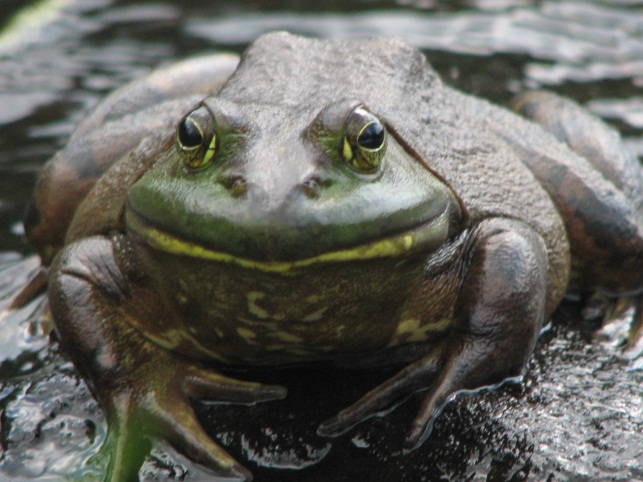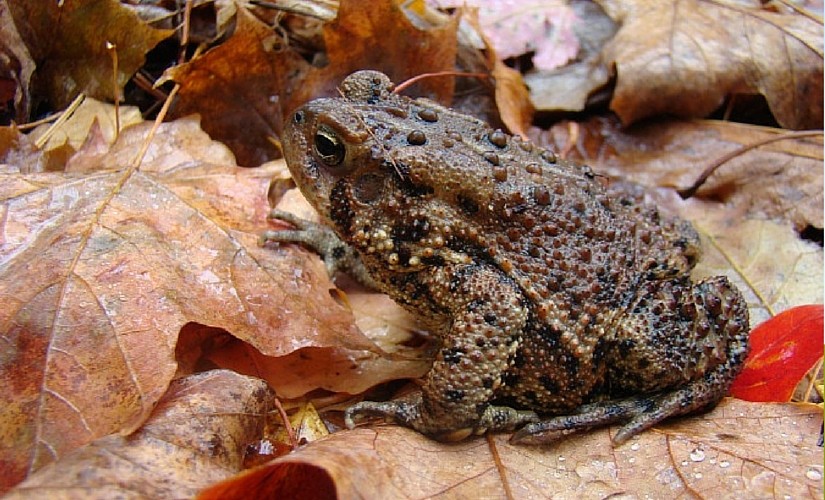This post was written by David LeGros, a park naturalist at Ontario Parks.
As the crisp fall days get colder and the occasional dusting of snow whitens the landscape, we know that winter is just around the corner. For the countless songbirds of our forests, they avoid our cold winters and lack of food by migrating south.
Other animals are adapted to the cold conditions and may grow a thicker coat of fur or feathers. Some, we think, have the enviable ability to sleep away the long Ontario winter by hibernating.
What is hibernation?

Hibernation involves the animal lowering its metabolism to a point where it uses very little energy; even its heart rate and body temperature drop and they typically do not eat.
Many animals do this: from bears to jumping mice, turtles and snakes, even many insects lie dormant for the winter.
Cold-blooded animals (who cannot produce their own body heat using their metabolism) like reptiles and amphibians must hibernate in Ontario; it’s much too cold to be active – they would freeze solid and die. In order to survive this difficult season, they must ensure they find just the right place.
Frogs
In the case of most frogs, the right place is under water. We often think that water, in the winter time, is very cold. But as we find out with the ice cube tray in the freezer, water is liquid until it’s frozen. If the water is still liquid, then it is above freezing — but not by much!
Many of Ontario’s frogs, like the Bull Frog, Green Frog, Mink Frog and Pickerel Frog, hibernate in the water. Many think that these frogs would burrow into the muck at the bottom of a pond or river to “keep warm” and stay hidden from predators.
But it turns out that — in order to survive the winter under the ice — they need to stay out of the mud because…
…these frogs breathe through their skin!

Very cold (4°C) water holds more oxygen than warm water, which is good news for the frogs. They can simply absorb the little bit of oxygen they need directly from the water through their permeable skins.
If they were buried in the mud, the supply of oxygen would quickly get used up, so that is why they stay exposed on the bottom, or perhaps nestled among rocks, logs or roots – to get a constant supply of oxygen from moving water.
Toads
Toads commonly found on trails and gardens, like the American Toad, hibernate on land. The forests and fields certainly do freeze, and even the soil freezes, so toads must find a place that escapes the frost.

To do this, they dig! Toads have special, hardened knobs on their hind feet that help them dig into the soil. They must dig down, often over 50 cm into the soil, to get below the frost line, where they will spend the winter.
Only once the soil temperature warms in the spring will they know their cue to emerge again.
Frozen frogsicles?
A few other frogs deal with cold temperatures a bit differently – they have found a way to become the cold! Our Wood Frog and the three species of tree frog found in Ontario (Gray Treefrog, Spring Peeper and Chorus Frog) are actually freeze-tolerant.
Before we get visions of frog-sicles, know this: these frogs freeze differently than, let’s say, a hotdog. These tree frogs and wood frogs hibernate in leaf litter or under bark – somewhere that is not really insulated from freezing temperatures.
Once temperatures are as low as -5°C, tiny ice crystals form in the body, freezing roughly 40% of the body’s water content.

In this condition, the frog no longer breathes, no blood flows and there is no heart beat – it may as well be dead. Once spring arrives, the frog thaws — sometimes in as little as a day — and may hop away.
Other animals cannot freeze and cheat winter in this way; ice crystals severely damage cells usually causing death.
So, next time you see a frog in the spring, know that it had to survive some tough conditions from the previous winter – and that is something to sing about!
